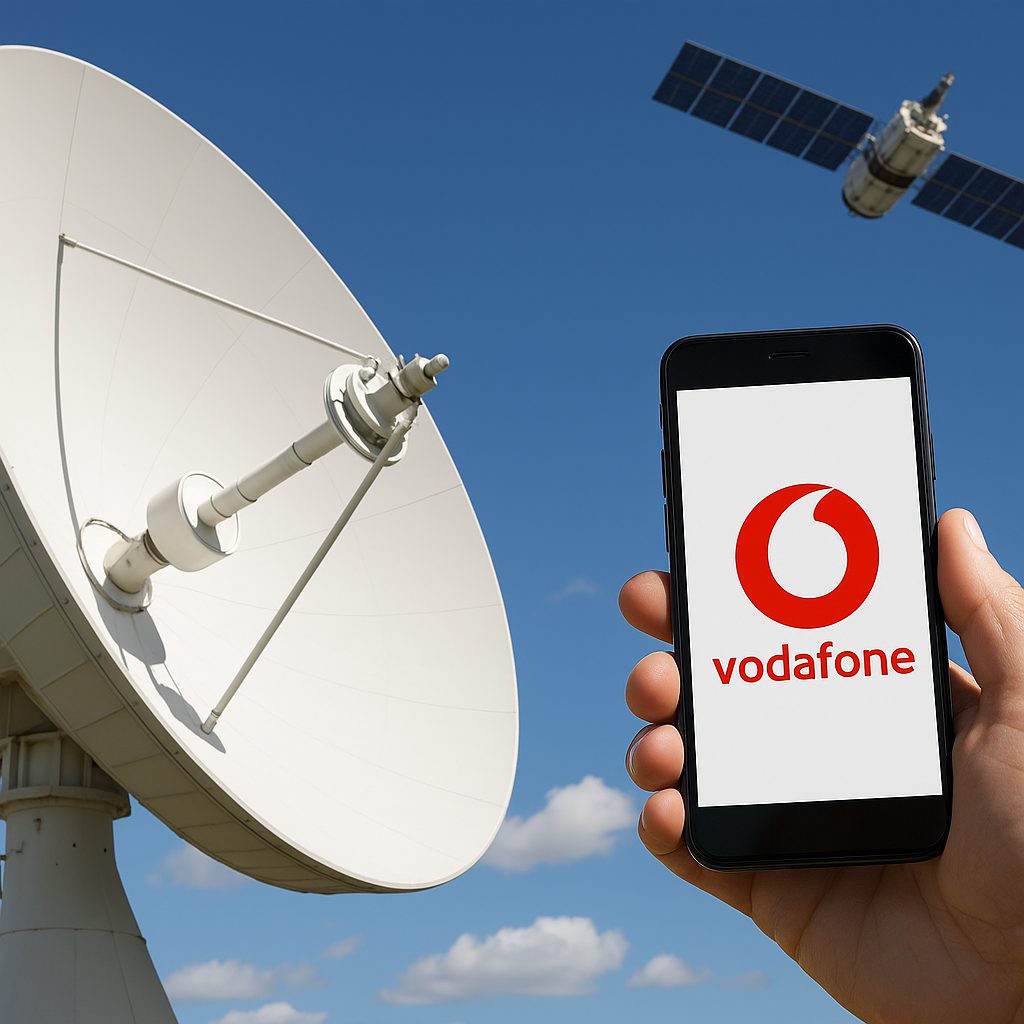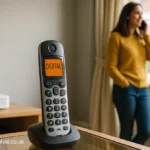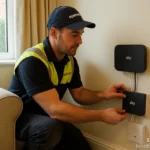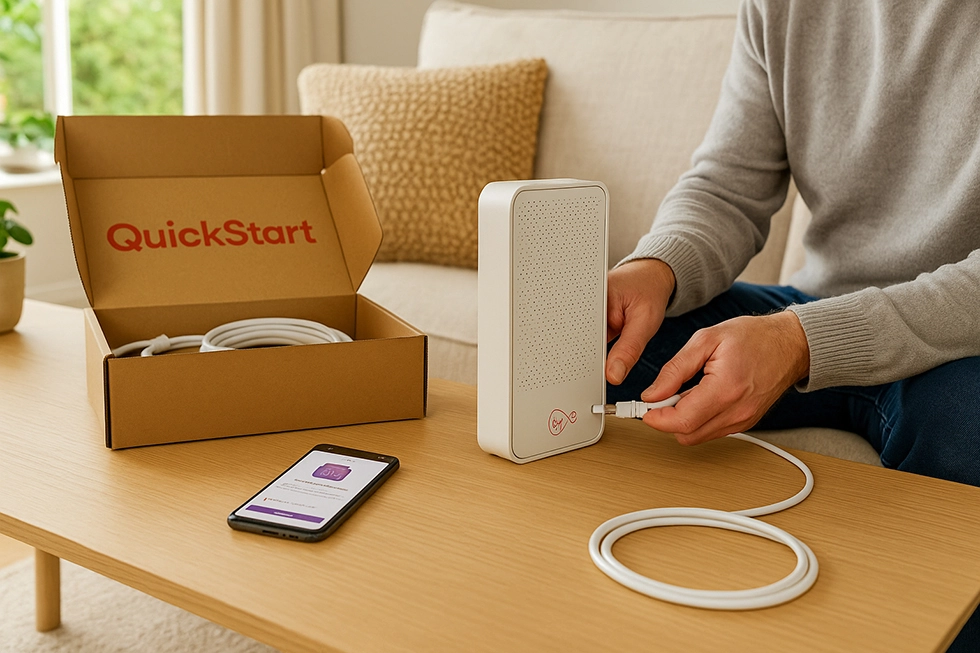Vodafone and AST SpaceMobile have confirmed the creation of a new satellite broadband joint venture called SatCo, aiming to deliver mobile connectivity directly from space to standard smartphones. With full commercial service expected by 2026, SatCo will offer 2G, 4G, and 5G mobile coverage via low Earth orbit (LEO) satellites across Europe — starting with 21 countries already showing strong interest.

Satellite Mobile Broadband for Everyday Phones
The partnership builds on years of technical development, including real-world testing with AST’s BlueWalker 3 satellite — a 1.5-ton prototype launched into low Earth orbit. It uses a 693-square-foot phased array antenna to communicate with unmodified smartphones, without needing any extra hardware or external antennas.
So far, trial results have shown download speeds exceeding 20 Mbps over a narrow 5MHz channel — enough for voice, SMS, and limited data usage while roaming globally. Future satellites, however, will deliver much higher performance, with peak data rates expected to reach up to 120 Mbps. This makes the platform suitable for a wider range of mobile use cases including real-time messaging, map services, app connectivity, and potentially even video calling.
Connecting Where Ground Networks Can’t
One of SatCo’s core goals is to bridge mobile coverage gaps that still exist in rural, remote, and cross-border areas. By combining terrestrial networks with satellite coverage, users will be able to stay connected even in places where building masts or fibre lines isn’t viable.
To make this seamless, SatCo will integrate with existing 4G and 5G infrastructure through a network of secure earth stations, ensuring reliable backhaul. The system will support automatic switching between land and satellite networks, enabling users to maintain a signal without changing devices or network settings.
A Scalable Satellite Network for Europe
The full rollout will involve launching more than 100 satellites over the next few years. These next-generation units — branded BlueBirds — will be larger and more capable than the original test satellite. The system is designed to operate entirely in low Earth orbit, ensuring lower latency and more efficient handover between satellites and terrestrial networks.
Vodafone and AST SpaceMobile have signed a long-term commercial agreement, valid until at least 2034, to jointly support the rollout and ongoing operation of the satellite broadband system. The joint venture, SatCo, will be headquartered in Luxembourg, reinforcing its strategic focus on pan-European digital infrastructure.
European Interest and Market Potential
SatCo isn’t just a technical project — it’s already generating attention from across the mobile industry. Operators in 21 EU member states have expressed interest in offering space-based mobile services through the venture. These wholesale agreements will allow local telecoms to bundle satellite coverage into their mobile plans, expanding coverage without needing to build physical infrastructure in hard-to-reach regions.
The platform will also offer critical connectivity during network outages, natural disasters, or emergency response scenarios, where ground-based networks might fail.
Strategic Role in Europe’s Digital Future
Vodafone CEO Margherita Della Valle described SatCo as an important initiative for Europe’s digital leadership. She stressed the need for ubiquitous mobile broadband, adding that this project ensures no citizen, business, or government service is left without connectivity.
AST SpaceMobile founder Abel Avellan echoed the sentiment, stating that SatCo will strengthen Europe’s position in the direct-to-device satellite market, while also supporting digital independence. By owning the infrastructure and delivering services locally, the joint venture aligns with broader EU goals for technological sovereignty and secure connectivity infrastructure.
Facing Competition from Starlink
SatCo enters a market where competition is already heating up. SpaceX’s Starlink has launched its own Direct-to-Cell (DtC) technology in parts of the United States and other regions. However, Starlink hasn’t secured UK mobile operator deals yet, and its current plans focus more on emergency SMS and IoT applications than full-service mobile broadband.
In contrast, SatCo is targeting full integration with European mobile networks, offering a true roaming extension that works with existing SIM cards and phones — no specialist hardware required.
What to Expect by 2026
The first wave of SatCo’s commercial service is expected to go live in 2026, with wider rollout continuing as new satellites are launched. Early use cases will focus on:
- Rural and coastal coverage
- Emergency backup where mobile signal fails
- Roaming continuity across borders
- Expanded access in outdoor or travel-heavy industries (e.g. shipping, logistics, rail)
As network capacity grows and speeds improve, SatCo could become an essential part of everyday mobile infrastructure — providing nationwide signal assurance, not just for backup but as an integral layer of mobile broadband access.
How It Works in Practice
Here’s how SatCo’s direct-to-phone satellite broadband is expected to function:
- Your mobile phone connects to a satellite only when out of terrestrial coverage.
- Data and voice are routed via satellite to a ground station, then handed off to the internet or the mobile network as usual.
- When back in normal coverage, the phone switches back to 4G or 5G.
- This happens automatically, requiring no changes to settings or hardware.
The model supports existing SIM cards, standard mobile apps, and can integrate with any 4G or 5G plan that includes support for the satellite layer via a partner operator.
Final Thoughts
SatCo is a major step forward in making truly universal mobile coverage possible across Europe. With backing from Vodafone and AST SpaceMobile, and support from EU markets already lined up, the platform has both the technical capability and commercial momentum to fill the connectivity gaps that ground networks still can’t reach.
If successful, SatCo won’t just offer satellite backup for extreme cases — it’ll help make dropped calls and dead zones a thing of the past.
Let me know if you’d like a visual explainer or an operator comparison table included in this article.










